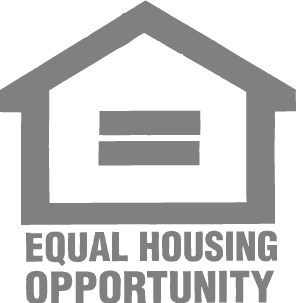The end of the year isn’t just a busy holiday season — it’s one of the most valuable checkpoints for rental property owners. A thoughtful year-end review gives you clarity, control, and confidence going into the new year. It’s your opportunity to assess how your rental performed, identify where revenue can grow, and ensure your property continues to attract and retain high-quality tenants.
At TALK Property Management, we believe strong portfolios are built on intentional planning and informed decisions. As Central Texas investors face evolving rental market trends, shifting expenses, and a competitive leasing environment, now is the time to evaluate performance and set strategies for a profitable year ahead.
Below are the core metrics and questions every landlord should include in their year-end rental review.
Cap Rate: A Clear Lens into Investment Strength
Your capitalization rate (cap rate) measures a property’s income compared to its value, offering a snapshot of long-term investment performance. Reviewing your cap rate annually helps you track appreciation, rental rate growth, and expense trends.
Evaluate:
- Current cap rate vs. last year
- Market average cap rates for similar Central Texas properties
- Cash-on-cash return (another helpful profitability metric)
If your cap rate is declining, it may signal rising expenses, under-market rents, or opportunities to implement strategic updates.
Landlord tip: Cap rate shouldn’t be reviewed in isolation — pair it with long-term appreciation trends and tax advantages to get the full picture.
Cash-Flow Health Check: Protect Your Profitability
Strong cash flow is the foundation of long-term real estate wealth. Year-end is the time to analyze your income and expenses holistically — not just month-to-month.
Review:
- Total annual rent collected
- Loan and operating cost trends
- Insurance increases or tax adjustments
- Reserve fund contributions and balance
- Emergency repair spending vs. planned maintenance
If unexpected expenses impacted your cash flow, a proactive plan for maintenance, tenant communication, and budgeting can help protect profitability moving forward.
Pro tip: If your reserve fund dipped during the year, rebuild it now before high-expense seasons like spring landscaping or peak HVAC use.
Vacancy & Turnover: Measure Time and Money Lost
Even a few weeks of vacancy can significantly affect annual returns. Year-end is the ideal time to measure turnover and determine whether changes are needed in your pricing or marketing strategy.
Track:
- Days vacant between tenants
- Make-ready costs and timelines
- Number of turnovers this year
- Average rental days-on-market in your submarket (Austin, Round Rock, Leander, etc.)
If your vacancy is higher than local averages, pricing strategy, property condition, or tenant communication may need refinement.
Consider: TALK’s streamlined leasing and marketing process is designed to reduce vacancy and maximize visibility in competitive markets.
Tenant Retention & Satisfaction: Keep Your Best Tenants
High-quality tenants are one of a landlord’s greatest long-term assets. Focusing on retention minimizes turnover and creates scalable, predictable income.
Review:
- Renewal rates and average length of tenancy
- Rent increase success and tenant response
- Whether communication felt smooth and proactive
- Any recurring maintenance or comfort complaints
Simple touchpoints — seasonal reminders, timely repairs, and thoughtful communication — build tenant loyalty and reduce turnover expenses.
Investor mindset: Treat tenant retention like customer retention — returning customers are always more cost-effective than finding new ones.
Maintenance & Asset Preservation: Prevent Tomorrow’s Expensive Repairs
A well-maintained property not only reduces long-term expenses but also attracts and retains better tenants. Year-end is the right moment to evaluate what worked — and what didn’t — in your maintenance approach.
Assess:
- Total maintenance spend vs. budget
- Balance of preventative vs. reactive repairs
- Vendor performance and response times
- Age and condition of HVAC, roof, plumbing, appliances, and flooring
Proactive care today prevents major costs tomorrow — especially in Texas, where freezes and heat can stress systems.
Smart move: Schedule annual HVAC servicing, gutter cleaning, and irrigation checks before peak seasons return.
Compliance & Documentation: Protect Your Investment
This is also the time to ensure you are organized and compliant going into tax season and the new lease cycle.
Confirm:
- Lease documents are updated and stored securely
- Key vendor and insurance documents are current
- Property tax assessments are reviewed
- Rental ledger and receipts are organized for CPA review
Proper documentation streamlines tax preparation and protects you in the event of a dispute.
Why a Year-End Review Matters
A strategic annual check-in helps you:
- Strengthen long-term return on investment
- Plan upgrades and maintenance efficiently
- Make informed decisions about rent adjustments
- Set leasing and tenant relationship goals
- Enter tax season prepared and organized
- Build confidence as a rental property owner
Real estate rewards those who plan ahead — and the end of the year is your moment to do just that.
Partner With TALK Property Management
At TALK Property Management, we support Central Texas landlords with comprehensive financial reporting, proactive property care, and strategic asset planning. Whether you’re a first-time investor or building a portfolio, our goal is to help you make smart decisions that protect your investment and strengthen cash flow year after year.
Let’s walk into the new year with clarity and momentum.
Ready for a professional year-end rental portfolio review? We’re here to help.


